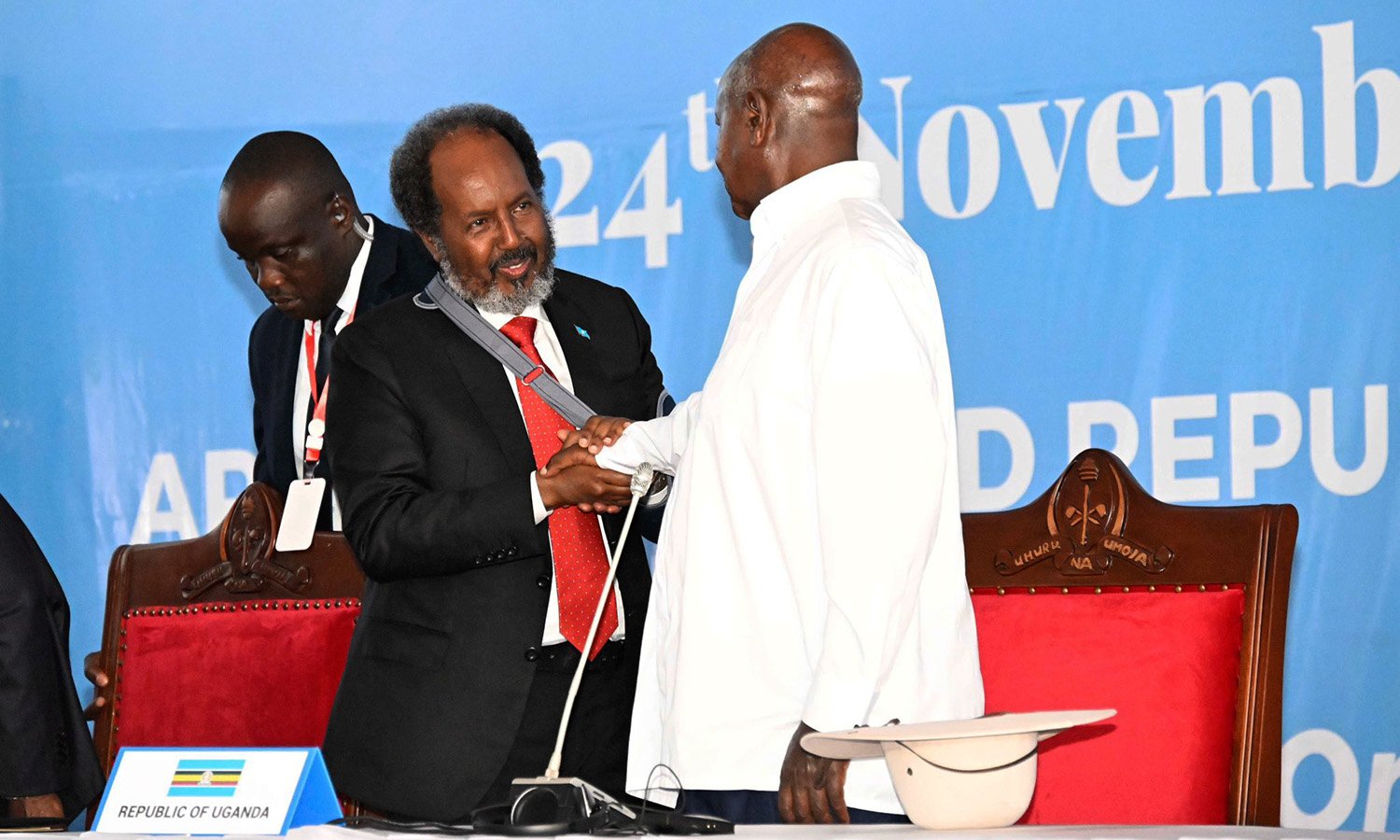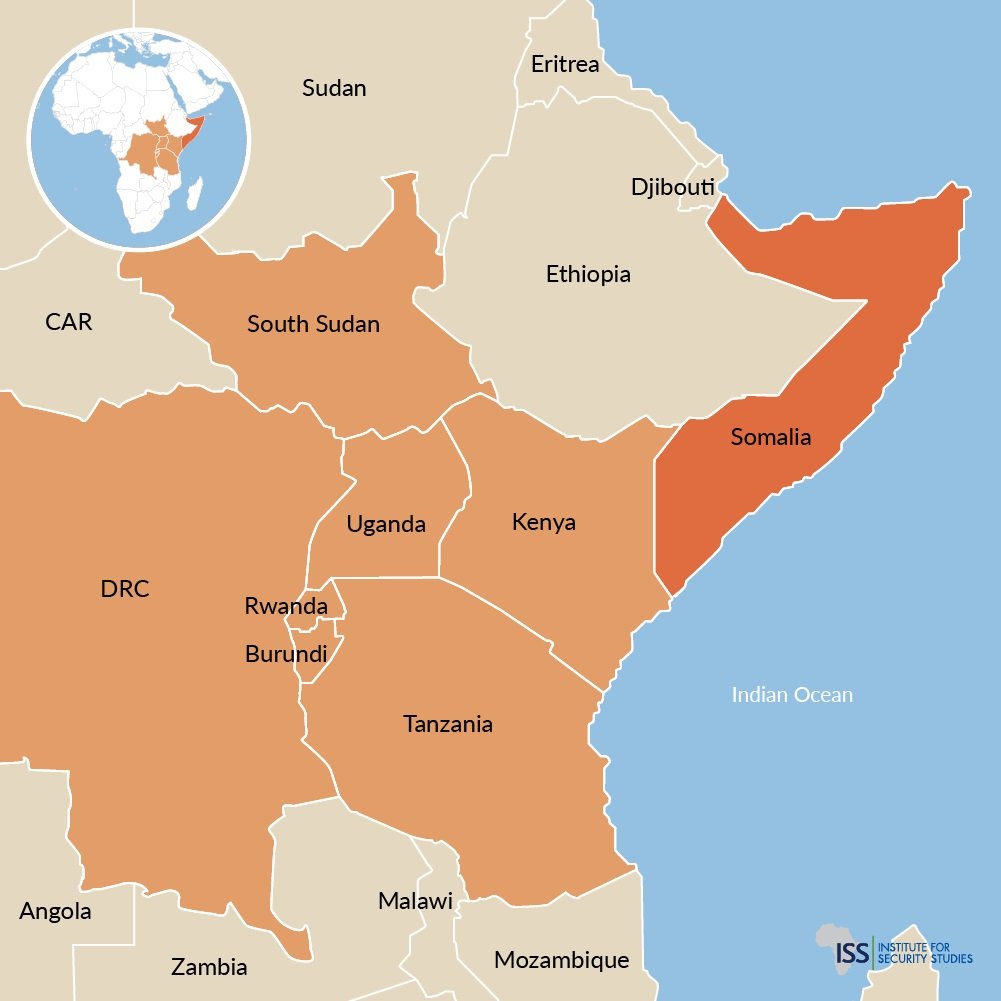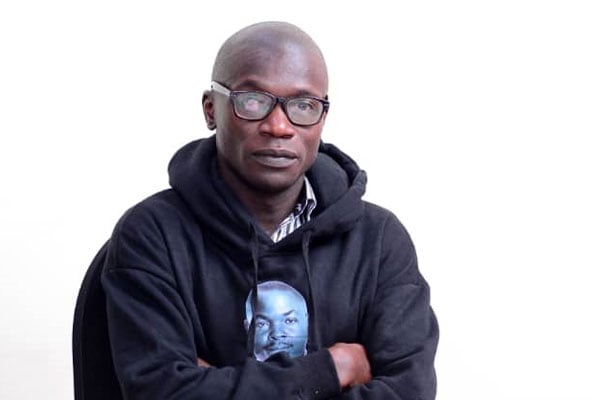Prime
East African Community bloc: Expanding too rapidly?

Burundi’s president Evariste Ndayishimiye (left) hands over instruments of power to South Sudan president Salva Kiir as EAC chairperson Peter Mathuki (centre) looks on during the EAC Summit of heads of state in Arusha, Tanzania, in November 2023. PHOTO/COURTESY/FILE
What you need to know:
- Having admitted that the East African Community (EAC) had failed to find a solution to the restive eastern Democratic Republic of Congo, leaders of the economic bloc admitted Somalia, another war-ravaged nation, increasing the baggage of a community that’s already riddled with bickering and financial limitations, Derrick Kiyonga writes.
One of the major marketing points for Somalia joining the East African Community (EAC) that the seven member states found irresistible was the war-ravaged country’s 3,000km coastline that would ostensibly link the region to the Arabian Peninsula, a vibrant economic zone, and Somalia’s marine economy like fishing.
On admission into the economic bloc, Hassan Sheikh Mohamud, Somalia’s president, doubled down on a similar message, saying his country will bring to the bloc a rich culture, heritage, and strategic location with 3,000km along the Indian Ocean coastline, which he said would create an environment conducive to trade and prosperity within its national borders.
Uganda’s Yoweri Museveni – who has been president for 37 years, making him the longest-serving leader in the region – was quick to project that commercial benefits that would come with the inclusion of Somalia into the community.
“EAC now has a combined population of more than 300 million people and a land area of 2.1 million sq. miles. This is about 56 percent of the size of the territory of the USA. Remember that the minimum target of economic integration is to deal with the prosperity of our people,” he said.

President Museveni (right) and his Somalian counterpart Hassan Sheikh Mohamud at the EAC summit in Arusha, Tanzania, last week. PHOTO/ FILE
When Mohamud visited Kampala last year, he didn’t go back to Mogadishu empty-handed. Museveni, who has been a proponent of expanding the community, promised him he would back Somalia’s membership and after achieving the target, he insisted the only way African countries will prosper is if they are outward looking.
External markets
“The answer is that the internal markets are not enough, because if internal markets of countries were enough, why would countries like China or India, each with 1.5b people, still struggle to sell their products in other markets? Africans not addressing this issue is the highest form of okulambaala [sleeping],” Museveni said, adding that Somalia has always wanted to be part of the community.
“Now Somalia has come in. Salutations to the Somali leaders and people. In 1968, both Somalia and Zambia applied to join the EAC. It was [Idi] Amin’s coup in Uganda that interfered with those developments,” Museveni added.
Yet Somalia isn’t the first country to join amid expectation that its joining will spur the region’s economy as was the case early last year when the Democratic Republic of Congo (DRC) was welcomed to the community, making it a bloc stretching from the Indian Ocean all the way to the Atlantic Ocean, consequently raising a prospect of trade blossoming.
In welcoming DRC to the bloc, Tanzanian president Samia Suluhu Hassan said, “Connecting the DRC railway network with the EAC will provide an opportunity for increasing access to EAC markets and reducing the cost of intra-regional trade.”
While her Ugandan counterpart Museveni was equally enthusiastic. “If you want prosperity in Africa, the way forward is markets… If I am a businessman or businesswoman and I produce a product or service, how many people will buy from me?” he said.
In terms of geography, it’s easy to see why the East African presidents were ecstatic about the DRC joining the bloc as these six countries could gain entre to far-flung West Africa and the Atlantic Ocean through DRC, which is two-thirds the size of western Europe.
But this can only happen if the Congo’s road and rail networks are tremendously elevated.
DRC’s untapped mineral range – cobalt, gold, diamond, aluminum, copper, tin, and other valuable minerals which are all valued at $24 trillion – has been documented, with many saying instead of bringing the country prosperity, the minerals have instead brought the country untold suffering and strife, with armed groups causing havoc.
But the EAC presidents say they were determined to change the tide.
“For people who are looking for prosperity, this is a very important issue. We welcome the DRC into the EAC. We now need to work on peace in eastern Congo, because that region has been having problems for some time,” Museveni said, while Rwanda’s Paul Kagame called for action in the aftermath of lots of speeches.
At the time of admitting the DRC into the EAC, Museveni and Kagame, his former protégé, were at loggerheads, with the former shutting the border, accusing – without providing evidence – Kampala of harbouring rebels that want to oust him.
No sooner had the standoff between Rwanda and Uganda melted than that between Rwanda and the DRC re-emerged after years of both countries enjoying a cosy relationship that saw trade flourish, with figures from the Rwanda Institute of Statics indicating how DR Congo took in 96 percent of Rwanda’s re-exports.
No sooner had DR Congo been allowed into the community than Rwanda, a member of the community, was accused of once again destabilising the eastern DR Congo using the M23, which for years had gone silent but for some reason emerged from its sanctuaries in the volcanic foothills of DRC’s North Kivu province.
With M23 seizing villages, the EAC leaders put together a peacekeeping force, which they called East African Community Regional Force (EACRF), but as Somalia was being allowed in Arusha, they also agreed not to extend the term of the force which failed to suppress the conflict yet.
“The fluid security situation in eastern DRC has been a source of unease, particularly for the five EAC partner states that share borders with DRC, not only due to the concentration of the groups that may destabilise our partner states, but also the humanitarian consequence which caused a spill over of displaced persons across the borders,” said Burundi’s Evariste Ndayishimiye, who handed over the bloc’s leadership to South Sudan’s Salva Kiir, admitting that the bloc had failed.
“…there has also been a challenge which requires give-and-take for the peace to hold,” Ndayishimiye added.
Struggling
With DRC unstable, the bloc has welcomed Somalia whose joining was accelerated after the Heads of State Summit agreed last year to fast track its application to join the community that is still struggling with its objectives of economic and political integration.
This is the third time Mogadishu is applying, with the second time coming in 2019. But the request was met with indifference within the community and this was exhibited when the bloc never sent a team of experts to Mogadishu to asses if Somalia qualified for membership.
The election of Mohamud, who is seen among leaders in the region to be more outward-looking than previous insular-minded Somali administrations, has been deemed to have augured well, thus the complete turnaround.
“Somalia belongs to East Africa. There is no country among the seven countries sitting here that Somalia is not linked to by business, by the community, or by any other means,” Mohamud, who defeated then-incumbent Mohamed Abdullahi Mohamed, popularly known as Farmaajo, said during the Heads of State High-Level retreat of the EAC Common Market Protocol hosted in Arusha in July 2022.
To be admitted into the economic bloc, the applying country is supposed to show that it adheres to the principles of good governance, democracy, the rule of law, human rights, and social justice.

Map showing EAC member states.
Yet Somalia is one of the most fragile countries in the world and hasn’t had functioning nationwide governments since a civil war that tore the country apart in 1991 following the fall of Mohammed Siad Barre.
Currently, large swaths of the country are under the control of Islamic militants al-Shabaab, with troops from the region – Uganda, Kenya, Burundi, Djibouti, and Ethiopia – trying to uproot them under the umbrella of the African Union Transition Mission in Somalia (Atmis).
In theory, Atmis’s mandate of fighting al-Shabaab ends next year and during the summit, the African leaders deliberated how Somali’s central government would take ownership of the country’s stabilisation strategy which would include restoring state authority.
It wasn’t the first time African leaders were talking about leaving the Somali government to take responsibility for the war-torn country.
Before Atmis emerged in 2022, the foreign troops in Somalia were operating under the auspices of the African Union Mission in Somalia (Amisom).
Amisom’s mandate started in 2007 with African leaders envisioning that they would degrade al-Shabaab and build the capacity of the Somali security forces so that the mission could eventually withdraw in 2021.
The withdrawal didn’t happen though, as the security threats by al-Shabaab that required the deployment in the first place, continued.
The idea of Somalian forces taking charge of the country has again been questioned following al-Shabaab militant’s raid earlier this year in Bulo Marer, found 130kms southwest of Mogadishu, killing 54 Ugandan soldiers.
Brig Peter Gaetano Omalo, the Ugandan contingent commander under Atmis, told Monitor that withdrawing by the end of next year isn’t realistic.
“Atmis has a timeline to exit by December 2024. However, this timeline isn’t static or cast in stone. The mission’s strategic leadership shall always guide on when to finally exit Somalia,” Brig Omalo said.
Terrorism isn’t the only impediment Somalia is facing, because once it was confirmed that the country had joined the EAC, Somaliland, which declared autonomy from Somalia in 1991 but has not gained international recognition for independence, reiterated that it’s not a party to the community.
“The government of the Republic of Somaliland expresses its deep concern regarding the recent accession of Somalia to the East African Community bloc. We firmly believe that this decision is a clear violation of Somaliland sovereignty and territorial integrity,” the Somaliland government said in a statement issued on November 25.
Fragile countries
DR Congo and Somalia aren’t the only countries in the community that are considered to be fragile since South Sudan, which was admitted into the bloc in 2015, also falls in the same category.
South Sudan got its independence in 2011, making it one of the youngest countries on earth, but it has since faced an all-out civil war starting in 2013 and it has struggled to organise presidential elections.
In 2018, Kiir penned a peace deal with Riek Machar, his former vice president turned-rebel-leader, formally ending a five-year war that had seen the death of thousands.
With that elections were due to be held in February this year, but it never happened as the forged government of national unity of Kiir and Machar failed to meet key clauses of the deal.
Furthermore, the UN has also ruled out the possibility of South Sudan having elections next year.
“Looking ahead, it would be impossible to envision free, fair, and credible elections in December 2024, unless all South Sudanese parties, leaders, and stakeholders grab the bull by the horns, and agree on a critical mass of decisions by the first quarter of 2024,” Nicholas Haysom, head of United Nations Mission in South Sudan (UNMISS), said.
EAC Statistics:
Population
Somalia: 17.07 million
Kenya: 53.01 million
Tanzania: 63. 59 million
Uganda: 45.85 million
DRC: 95.89 million
South Sudan: 10.75 million
Burundi: 12.55 million
Rwanda: 13.46 million
Total population: 312.17 million
GDP
Somalia: $7.628 billion
Kenya: $110.3 billion.
Tanzania: $67.84 billion
Uganda: $40.53 billion
DRC: $55.35 billion
South Sudan: $ 12 billion
Burundi: $2.78 billion
Rwanda: $11.07 billion
Total: $307.498 billion
Debts to the EAC
Burundi: $15.5 million
DRC: $14.5 million
Rwanda: $7.3 million
Uganda: $6.1 million
Tanzania: $123,694
Kenya: $20
South Sudan (cleared outstanding debt of $15 million, after the summit waived over half of the $36 million arrears it had)
Public/ national debt
Kenya: $70.75b (69.0% of GDP)
Tanzania: $40.6b (40% of GDP)
Uganda: $21b (52.0% of GDP)
Rwanda: $7b ( 68.0% of GDP)
DR Congo: $ 7.3b (14.6% of GDP)
Somalia: $3.3b (40.8% of GDP)
Burundi: $2b (66.0% of GDP)
South Sudan: $300m (67% of GDP)
Annual membership fee for EAC:
$8 million





